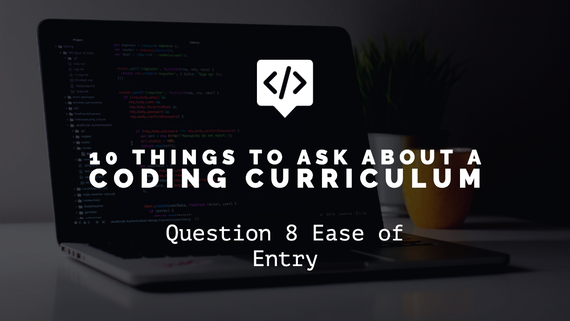|
Curriculum approach is an interesting piece when you look at what you need in a coding curriculum. It basically comes down to the way that a curriculum platform teaches coding. It needs to be engaging, interactive, and really catch the attention of students, and there a couple of very clear ways to do that.
It starts with the ways you teach students, and do those ways translate from both a block format to also being in text formats. There are really two ways that make sense to approach this. The first is with puzzles. These are where you are putting blocks together to move a character to a goal. While most block programs have these, I think what you will find is that many of the text coding platforms will get away from these even they are great to get students started with basic concepts. I think looking for these and the engagement that comes with them is always important, The other activity that you will see in platforms projects. These are the creative output that comes with coding, and really the key with them is how platforms progress students to create better projects. Are there tutorials to get them started? Do those tutorials start simply and then gradually add more skills? It’s always something to consider. I think when you look at the curriculum approach you have to also look at goals. What is the platform leading students to create? Are they trying to build games, animation, or stories? Are they coding to show what they know in CORE classes? The better ones that are out there take things that kids are interested in and they drive learning with them. Really, the key is how the platform peaks a student’s interest and keeps it. If see something like lots of video tutorials it’s probably not great. If you see engaging interactives that you know will keep kids in, you should latch on to it.
0 Comments
Let’s get back to looking at things to ask about a coding curriculum. We have been doing conference preview blogs since February is such a heavy conference season, but as we move into March that schedule slows down and this series will be the focus of the blog for the next couple of weeks.
This week we focus on a massive factor when it comes to a coding curriculum. It also applies to coding hardware and tools. It’s all about ease of entry. Can someone start that coding curriculum, hardware, or tool easily? As we expand out to teachers who have not taught coding before, this might be the most important question, and really that ease of entry should be there for both teachers and students. What does this mean for teachers? It can start with having a platform that is a familiar format. If you model it after an LMS that familiar format is there. They can start with building a class and assigning lessons, and they can choose lessons from a pre-determined bunch. It takes out the guesswork. You can then add in a host of teacher resources that allow someone who has never taught coding to feel comfortable. This ease of use has to be there since we don’t have enough programmers who want to go into the classroom. We have to be able to depend on others. Ease of use also matters on the student side. It all starts with their dashboard. Can they get into the classroom easily? Are assignments easy to find? Once that is there, can students easily move to creation? You don’t want the dashboard and the experience to get in the way, but you want to have a dashboard that gives them things like tutorials to easily progress. The ease of use factor also comes into play as you look at coding hardware. A great example is the category of microcomputers. There are a ton of them out there but many of them require a lot of training for both teachers and students to get started. They may be powerful, but if you can’t unlock that power there is really no point. It’s why micro:bit is such a great starting point. It allows any student who can read to get started with block coding to build almost anything. The best tools are those ones that combine this ease of use with an incredibly high ceiling. When you find those, you find magic. Two conferences in one week! What can be better? This year I am taking advantage of Ohio’s move to virtual and I will be part of OETC the week of February 14th-18th. It’s a great Valentine's Day surprise. OETC is one I have never done, and hopefully I can go next year in person.
My Sessions at OETC
Another one of my favorite conferences is coming up! It’s IDEA in Illinois which was formerly ICE. This is a conference that is almost a second home to me as one of my first friends in Ed Tech calls this home and several of my other friends have come to this one over the years. It’s a hybrid one this year, so I have both an in-person session and a virtual one. They include:
|
Archives
January 2023
Categories |




 RSS Feed
RSS Feed
